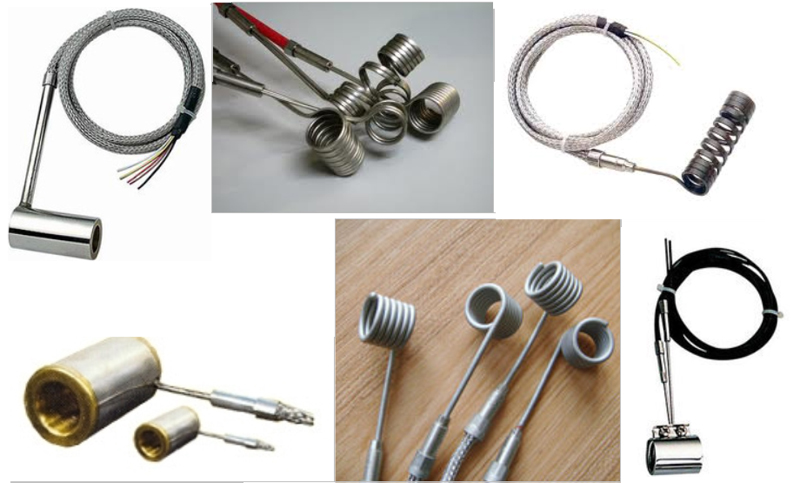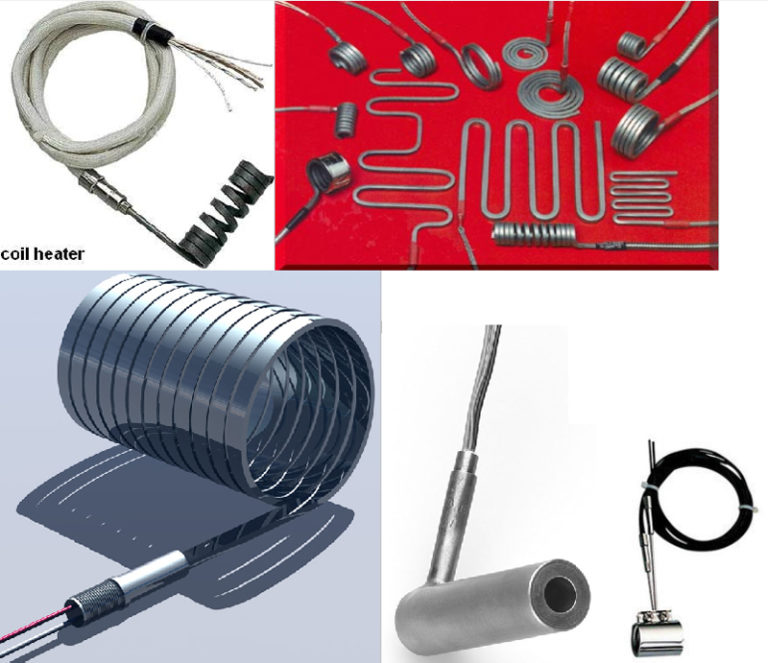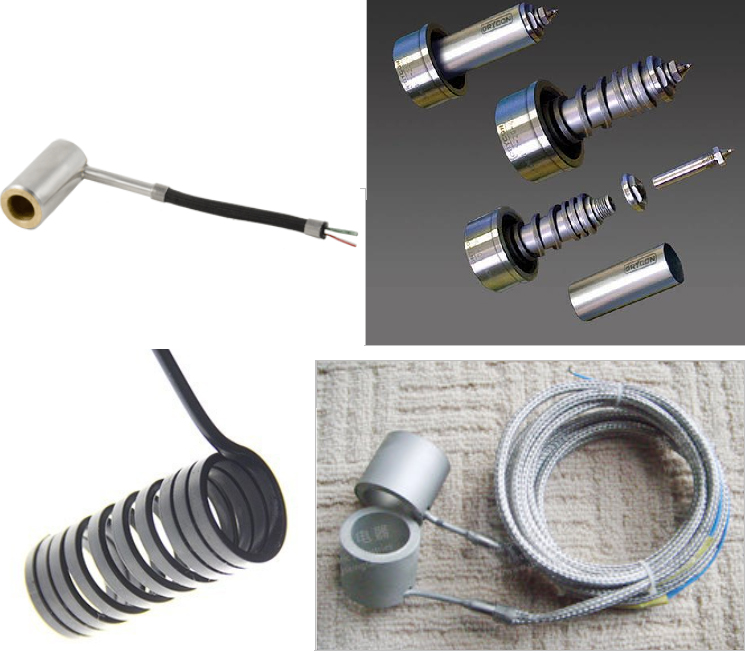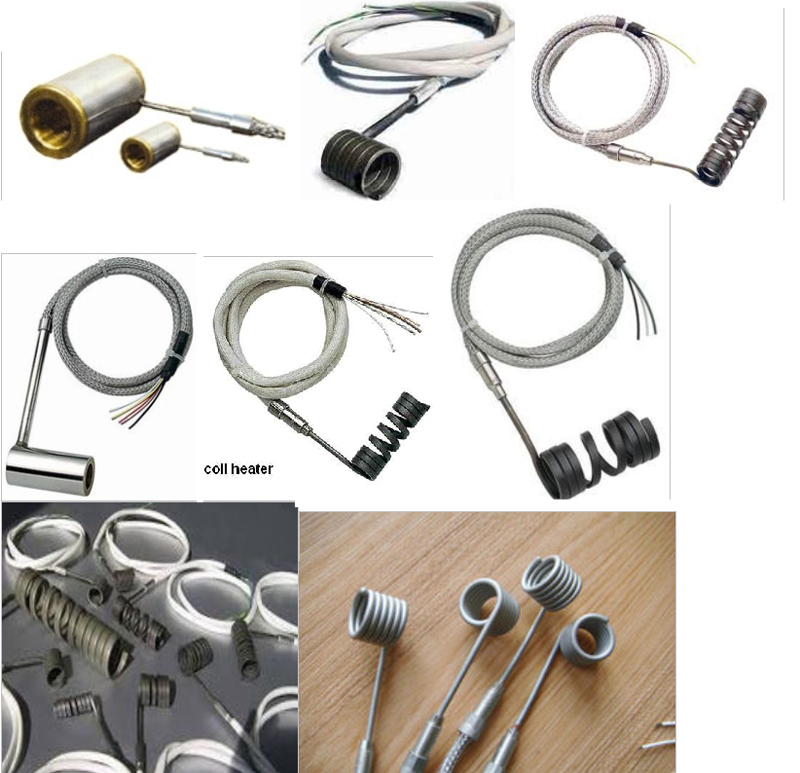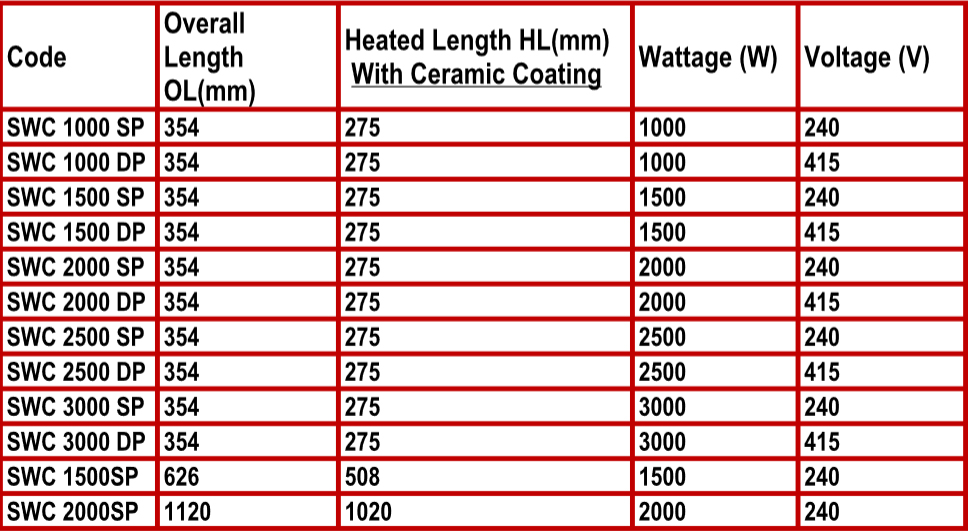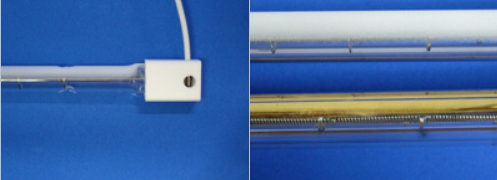What is a Cartridge Heater?
A cartridge heater is a device that is usually tubular and is inserted into drilled holes of metal blocks for heating.
Cartridge Heater Selection
The key questions which need to be answered before selecting a cartridge heater are:
- How much wattage is required?
- What voltage will be used?
- What is the heated length required?
- How long do the heater leads need to be?
- What is the diameter required?
- What is maximum temperature?
- What is the ambient temperature?
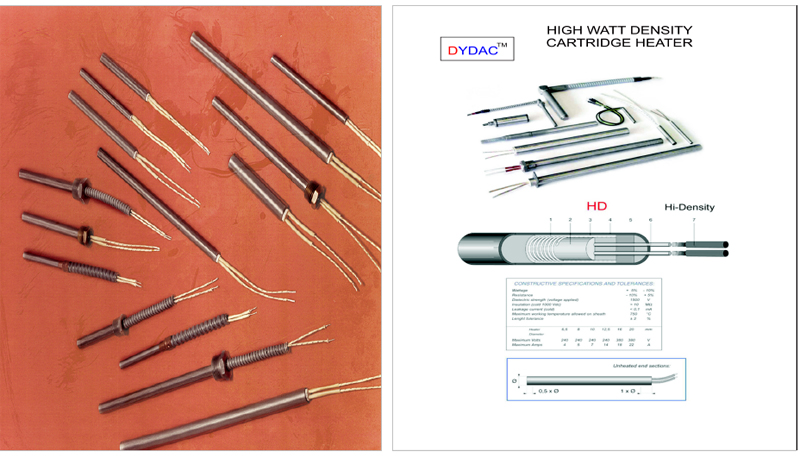
Application Of Cartridge Heaters
The majority of applications do not require maximum watt/in². Use a watt density only as high as needed. Take advantage of the safety margin provided by using ratings less than the maximum allowed. Select space heaters for most even heat pattern rather than the highest possible wattage per heater.
Hi-Density Cartridge Heaters
Hi-Density Heaters provide localized heating in processes requiring close temperature control such as:
- Dies
- Molds
- Hot stamping
- Packaging equipment
- Plastic extruders
- Injection molding mach.
- Platens
- Labeling
- Bag sealing
- Medical equipment
Maximum Temperature:
932°F (500°C).
Hi-Density Cartridge Heaters Metric Diameters
Standard Sizes and Ratings by Diameter
6.5mm, 8 mm, 10 mm, 11.5mm, 11.8mm, 12.5 mm, 16 mm, 18.5 mm, 19.5 mm, 20 mm
Other Sizes can be also made as per specifications
Temperature Controllers and Sensors for Cartridge Heaters
The sensor for the temperature control is also an important factor and should be placed between the working surface of the part and the heaters. The temperature of the part approximately 1/2″ away from the heaters is used in selecting maximum allowable Watt density from the graph.Control of power is an important consideration in high Watt density applications. On-off control is frequently utilized, but it can cause wide excursions in the temperature of the heater and working parts. Thyristor power controls are valuable in extending the life of high Watt density heaters, since they effectively eliminate on-off cycling.There are a variety of temperature controllers and sensors one can use depending on the application. One of the more popular sensor types for cartride heater applications are the surface mount temperature sensors. Thermocouple, RTD or Thermistors are available with an adhesive backing or the ability to be cemented to the surface being heated. There also bolt on and magnetic surface mount type temperature sensors available. Digital temperature controllers come in many different sizes with many output and input choices. Thermcouple and RTD inputs are the most popular with a dc pulse output. DC pulse ouputs allow the user to go to a larger relay to switch the heater load and use proportional control versus on/off control which can shorten the heater life.
Important Installation Considerations
1. For closest fit and best heat transfer, use reamed holes.
2. When possible, drill holes through the object being heated. This will make heater removal easier.
3. When using an anti-seize coating like Copper Graphite paste, do not apply over lead wires or any other current carrying conductors.
4. When using insulated tape or sleeving, check to make sure they are rated for the temperature of the application. Lower temperature rated materials can contain an adhesive or binder that can carbonize and become electrically conductive.
5. When using heaters near their maximum recommended watt density, it is recommended the temperature sensing probes be approximately 1/2″ from the heater sheath.
6. Lead wires should not be located in the hole containing the cartridge heater during operation. This may cause the lead wires to be exposed to temperatures above their rated temperature.
7. Many applications will subject a heater’s electrical terminations to one or more of the following potentially damaging conditions:
• Moisture
• Flexing
• Oil and other contaminants
• Abrasion
• High temperature
Note: To protect the heater from damage in these harsh environments, Dydac has a wide selection of terminations and options available.
Recommendations for Improving the life of Dydac High Watt Density Cartridge Heaters
Dydac Hi-Density Cartridge Heaters have been widely used in many demanding and diverse applications during the past quarter century. The most common applications are platen, plastic mold and die heating, liquid immersion and air heating. Selection of the wrong termination for the particular application is the major reason for all heater failures. However, failure to consider other important criteria can also have a negative effect on the life of the heater. To get the best performance and assure long life, it is important to carefully evaluate the following factors.
Heater Watt Density and Operating Temperature
Cartridge heater watt density is defined as the wattage dissipated per square inch of the heated sheath surface. For a particular application a heater’s watt density governs internal resistance wire temperature, which determines the outer sheath temperature. It is advisable to use heaters that have watt densities below the maximum recommended watt density for the material being heated to achieve the longest heater life. A Hi-Density cartridge heater designed at the maximum recommended watt density allows the smallest heater to be used to obtain the required wattage with good service life. All things being equal, using a lower watt density heater will typically provide optimized service life.Determining FitWhen heating a platen, mold, die or hot runner probe with Hi-Density Cartridge Heaters inserted into drilled holes, fit is an important factor in determining the life expectancy of the heater.
Temperature Control and Location of Temperature Sensing Device
In order to better control the heater temperature and hence the resistance wire temperature, use of an appropriate temperature control and the proximity of the heater to the sensor is very important. Higher watt density heaters can generate heat faster than the surrounding area’s ability to dissipate heat. This creates a thermal lag between the heater and the sensor. The closer the sensor to the heater, the better you can control the heater temperature. By keeping the sensor further from the heater, temperature gradients of several hundred degrees can be observed in many applications, especially during initial start-up and heavy thermal cycling. Although the set operating temperature may be low, the heater may be running at a very high temperature. This is a common cause of heater failure. This can be minimized using time proportional and PID functions of the temperature Controllers.
Temperature Control and Location of Temperature Sensing Device
In order to better control the heater temperature and hence the resistance wire temperature, use of an
Power Control
Power control methods affect the life expectancy of heating elements. In general, although economical, on-off controls increase thermal fatigue and oxidation rate on heating elements by causing wide temperature swings of the internal heating element. Silicone controlled rectifiers (SCR’s), and solid state power controls can increase the life expectancy of heating elements by reducing the temperature swings of the internal heating element.




